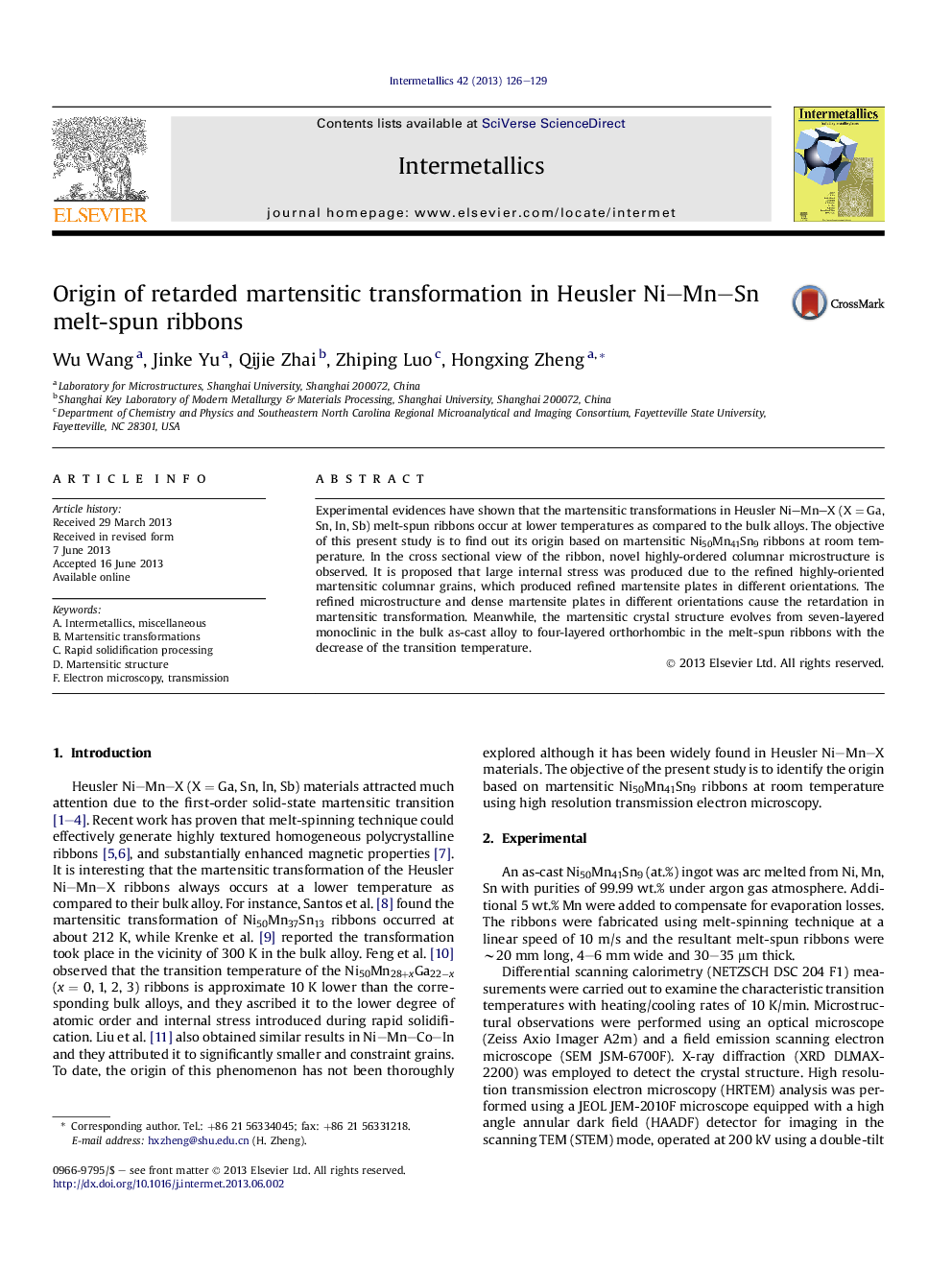| Article ID | Journal | Published Year | Pages | File Type |
|---|---|---|---|---|
| 7988745 | Intermetallics | 2013 | 4 Pages |
Abstract
Experimental evidences have shown that the martensitic transformations in Heusler Ni-Mn-X (XÂ =Â Ga, Sn, In, Sb) melt-spun ribbons occur at lower temperatures as compared to the bulk alloys. The objective of this present study is to find out its origin based on martensitic Ni50Mn41Sn9 ribbons at room temperature. In the cross sectional view of the ribbon, novel highly-ordered columnar microstructure is observed. It is proposed that large internal stress was produced due to the refined highly-oriented martensitic columnar grains, which produced refined martensite plates in different orientations. The refined microstructure and dense martensite plates in different orientations cause the retardation in martensitic transformation. Meanwhile, the martensitic crystal structure evolves from seven-layered monoclinic in the bulk as-cast alloy to four-layered orthorhombic in the melt-spun ribbons with the decrease of the transition temperature.
Keywords
Related Topics
Physical Sciences and Engineering
Materials Science
Metals and Alloys
Authors
Wu Wang, Jinke Yu, Qijie Zhai, Zhiping Luo, Hongxing Zheng,
